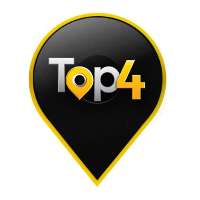Many people believe that visual elements are the most impactful way to grab attention on any social media platform. Using social media as a marketing strategy is widely accepted as an effective approach. Scrolling through posts and looking at visually appealing images is something that most of us enjoy. Unfortunately, different social media platforms often have different image size requirements. However, there is good news, by using the most popular image sizes for each platform, we can ensure that our visuals are not distorted and will look great on all social media platforms. This guide will make it easier for us to understand the proper image sizes for the best results for our social media posts and audience.
Facebook is a valuable platform for reaching B2B prospects, but it can be quite complex when it comes to sharing photos due to the various types of displays and the number of different image sizes and placements. It's important to be intentional and strategic when selecting images to share on Facebook.
By planning ahead, we can ensure that we are using the right image in the right place and for the right reason. For instance, our Facebook cover photo is much larger than most other images that can be shared on the site, which makes it a great option for showcasing our brand, displaying information and etc. However, it is important to note that this photo is only accessible from our page, so this would be a good place for descriptive branding imagery and information.
Instagram is one of the most popular social media platforms, and it's a great place to showcase the personality of our brand, whether that be through introduction videos, customer testimonials, or a quick showcase of our products. It's important to remember that Instagram will automatically size down almost all images and videos that we post, so it's essential to stick to the above dimensions to ensure that our visuals are of high resolution and quality. This way, even when the platform size it down, the image quality will still be maintained.
The platform is known for its visually appealing content, so if we can make sure that our posts are eye-catching and dynamic, we are more likely to catch the attention of our prospects. Additionally, the platform has a strong focus on the visual storytelling, so by providing images that are well-suited for the platform, we can expect to have a higher engagement rate with our audience.
Many B2B companies may not consider Instagram as a significant platform, but it can be a valuable tool for technology and visual-based companies to reach potential buyers, especially if they are looking to target a younger audience. Instagram is known for its short videos, stories, and emphasis on visual marketing, which can be leveraged to showcase the experience and technology of our products or services in a way that resonates with the target audience. By tailoring our marketing approach to the platform's strengths, we can effectively reach and engage a younger audience who spends a lot of time on Instagram.
YOUTUBE
Youtube is an ideal platform to showcase what our company does, it's the best place to organize and present all of our videos. With over 1 billion unique users visiting the site each month, it's an excellent opportunity to connect with our fan base and build a strong following. Whether it's a tutorial, a client testimony, a webinar, a competitor comparison video, or creative videos, YouTube provides a wide range of options for us to showcase our company, our products, and our services in a visually engaging way that can help us to connect with our target audience and build a loyal fan base.
Twitter is a great platform for having conversations with our prospects, customers, and partners. It allows us to engage in real-time interactions and build a personal connection with our audience. Furthermore, it's a good place for prospects to ask questions and get a sense of our company's personality and values. Additionally, we can use hashtags, relevant trending topics, and links to drive traffic to our website or other social media platforms, which can help to increase our reach and visibility. By using Twitter to interact with our audience, we can establish ourselves as a thought leader in our industry and build a community of engaged followers who are more likely to become customers.
Keep it simple, usually a condensed version of your logo or a recognizable icon for your brand works well.
High resolution is recommended as these images can be expanded while in-stream.
LinkedIn is a powerful platform for B2B companies looking to generate leads, engage with prospects and drive website traffic. Not only is it a great place to find high-quality leads, but it also provides an opportunity to showcase our company's culture and personality through videos, blogs, and photos. Additionally, it's an excellent platform to educate and engage with prospects, building trust and relationships, which can help to increase the chances of converting them into customers.
This list of social media platforms is not exhaustive, there are many more platforms that can be used to promote the business. To be successful in social media marketing, it's important to create clean and visually appealing images, and to be familiar with each social site before posting. Doing so will help to maintain consistency and deliver captivating content.
If you are not sure how to promote your brand on any of these platforms, or if you need help with creating compelling images and posts, or if you lack quality content to help drive awareness and traffic, you can always seek help from experts. Our team can provide expert advice on social media marketing and social media campaigns, contact us today to learn more.
![Guide to Social Media Image Size [Updated 2023]](https://www.top4.com.au/custom/domain_1/image_files/906_photo_559838.jpg)


































